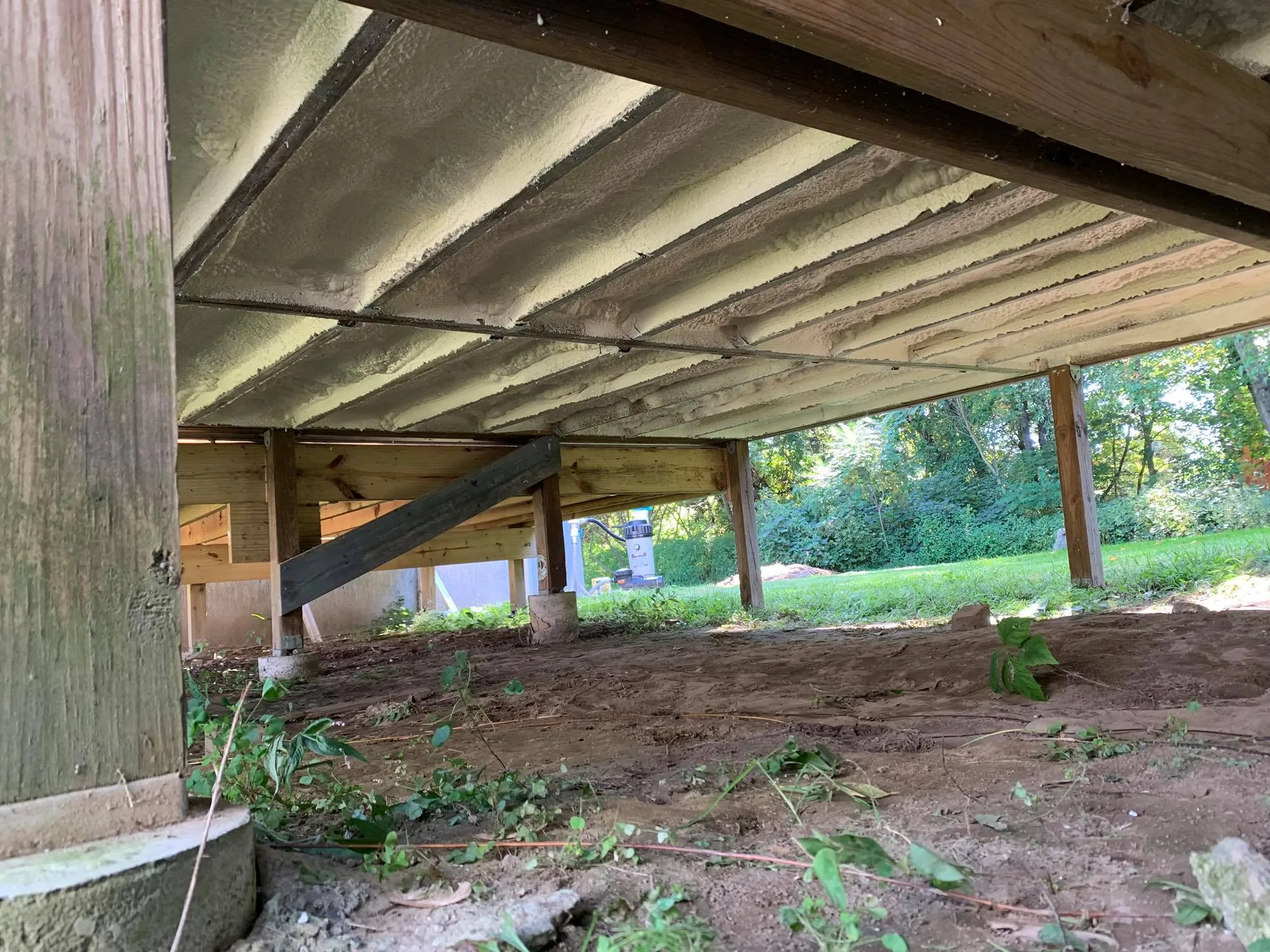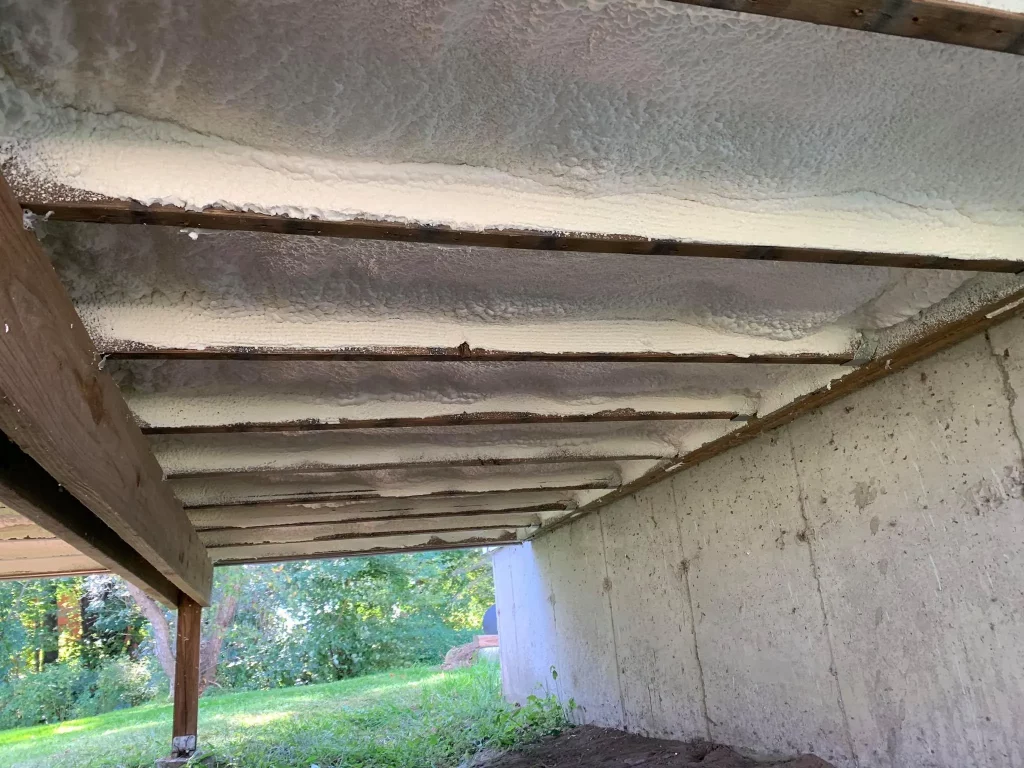
A home without proper insulation is like a winter coat with holes in it. It simply won’t do its job. For homeowners in Northborough, Massachusetts, where cold winters and warm, humid summers are the norm, effective insulation is not a luxury; it’s a necessity. The most common indicators that a property needs an insulation upgrade include consistently high energy bills, noticeable temperature differences between rooms, evidence of pests, signs of moisture damage, and insulation that is visibly old or degraded. Understanding these signs can help prevent energy waste and protect a home’s structural integrity.
This article provides a detailed look at each of these five signs, drawing on years of professional experience in diagnosing and provide insulation solutions in Northborough, MA. The information here is intended to help property owners identify problems early, understand the underlying causes, and make informed decisions about their homes.
One of the most direct signs of poor insulation is a sudden or steady increase in heating and cooling costs. When insulation loses its effectiveness, the home’s HVAC system has to work much harder to maintain a comfortable temperature. This means it runs longer and uses more energy, which is reflected directly in monthly utility bills.
In Massachusetts, heating and cooling account for a significant portion of a home’s energy use. A report from the U.S. Energy Information Administration shows that space heating is the largest residential energy expense in the state. If your bills are climbing without a change in your usage habits or utility rates, it’s a strong indication that conditioned air is escaping through poorly insulated walls, attics, and crawl spaces.
Bonus Tip: Conduct a simple “touch test” on a cold day. Interior walls, ceilings, and floors should feel warm and dry. If they feel cold or damp, it suggests that insulation is not providing an adequate thermal barrier, leading to heat loss.
Do you have rooms that are always too hot in the summer or impossible to keep warm in the winter? Are there noticeable drafts near windows, outlets, or baseboards? These are classic symptoms of inadequate or failing insulation.
Air naturally moves from warmer areas to cooler ones. In a poorly insulated home, this movement is uncontrolled. During a Northborough winter, warm indoor air escapes through gaps in the attic and walls, while cold air infiltrates from the outside. This creates uncomfortable cold spots and forces your furnace to run continuously. In the summer, the reverse happens, with heat from the outside seeping in and making your air conditioner work overtime. Proper insulation and air sealing work together to stop this unwanted air exchange, creating a more stable and comfortable indoor environment.
Pests like mice, squirrels, and insects love old, ineffective insulation. It provides warm, soft material for them to nest in. If you hear scratching in the walls or ceiling or find droppings in your attic or basement, it’s time to inspect your insulation.
Pests don’t just make a mess; they destroy the insulation’s ability to resist heat flow, known as its R-value. They create tunnels and nests, compacting the material and creating massive gaps in coverage. This damage can go unnoticed for years, quietly compromising a home’s energy efficiency and creating unsanitary conditions.
Insulation problems are often linked to moisture issues. When warm, moist indoor air comes into contact with a cold surface inside a wall or attic cavity, condensation can form. Old, compressed, or improperly installed insulation can contribute to this problem by allowing such cold spots to exist.
This trapped moisture can lead to several problems:
Sometimes, the best way to know if you need new insulation is simply to look at it. Insulation, like any other building material, degrades over time. If your home is several decades old and still has its original insulation, it’s likely well past its prime.
Here’s what to look for:
The lifespan and performance of insulation vary greatly by type. Knowing what you have and its expected lifespan can help determine if it’s time for an upgrade.
| Material Type | Typical R-Value (per inch) | Expected Lifespan | Key Characteristics |
|---|---|---|---|
| Fiberglass (Batts & Blown-in) | 2.2 – 4.3 | 80 – 100 years, but can degrade if wet or compressed | Most common type; effectiveness is highly dependent on proper installation. |
| Cellulose (Blown-in) | 3.1 – 3.8 | 20 – 30 years before significant settling may occur | Made from recycled paper; good at filling irregular spaces but can absorb moisture if there’s a leak. |
| Spray Foam (Open & Closed-Cell) | 3.5 – 7.0 | 80+ years | Acts as an air and moisture barrier. More expensive upfront but offers superior performance and longevity. |
The U.S. Department of Energy provides extensive information on different insulation types and recommends R-values based on climate zones. For Northborough (located in Climate Zone 5), high R-values in attics (R49-R60) and walls (R13-R21) are recommended.
Before replacing your insulation, it’s important to assess your property’s specific needs. Consider the age of your home, any existing comfort issues, and your long-term budget. An energy audit can be a valuable first step, as it uses tools like blower doors and infrared cameras to pinpoint exact areas of air leakage and insulation gaps. Also, consider the type of insulation that best suits different areas. For example, closed-cell spray foam is an excellent choice for basement walls due to its moisture resistance, while blown-in cellulose or fiberglass is often a cost-effective solution for attics.

For a typical single-family home, attic insulation can often be completed in a single day. Wall insulation may take longer, depending on the size of the house and the material being used.
Professional installers take great care to protect your home. They use plastic sheeting to cover floors and furniture and employ dust control measures. For blown-in insulation, the work is mostly contained within the attic or performed from the exterior of the home.
Yes, most insulation materials have sound-dampening properties. Materials like cellulose and spray foam are particularly effective at reducing the transmission of airborne noise, making your home quieter.
Yes, programs like Mass Save often offer rebates and incentives for homeowners who upgrade their insulation and improve their home’s energy efficiency. It’s always a good idea to check for the latest offers.
Recognizing the signs of failing insulation is the first step toward a more comfortable and energy-efficient home. By addressing high energy bills, inconsistent temperatures, and other warning signs, property owners can stop wasting money and improve their indoor environment. Carefully evaluate your home’s condition and consider a professional assessment to determine the best course of action for your specific situation.
If you’re experiencing any of these signs, it may be time for an insulation inspection in Northborough, MA. For a thorough evaluation and professional advice, contact Lamothe Spray Foam Insulation. You can reach us by phone at (508) 847-0119 or via email at [email protected] to discuss your property’s needs. An expert assessment can provide clear answers and help you find the right solution.